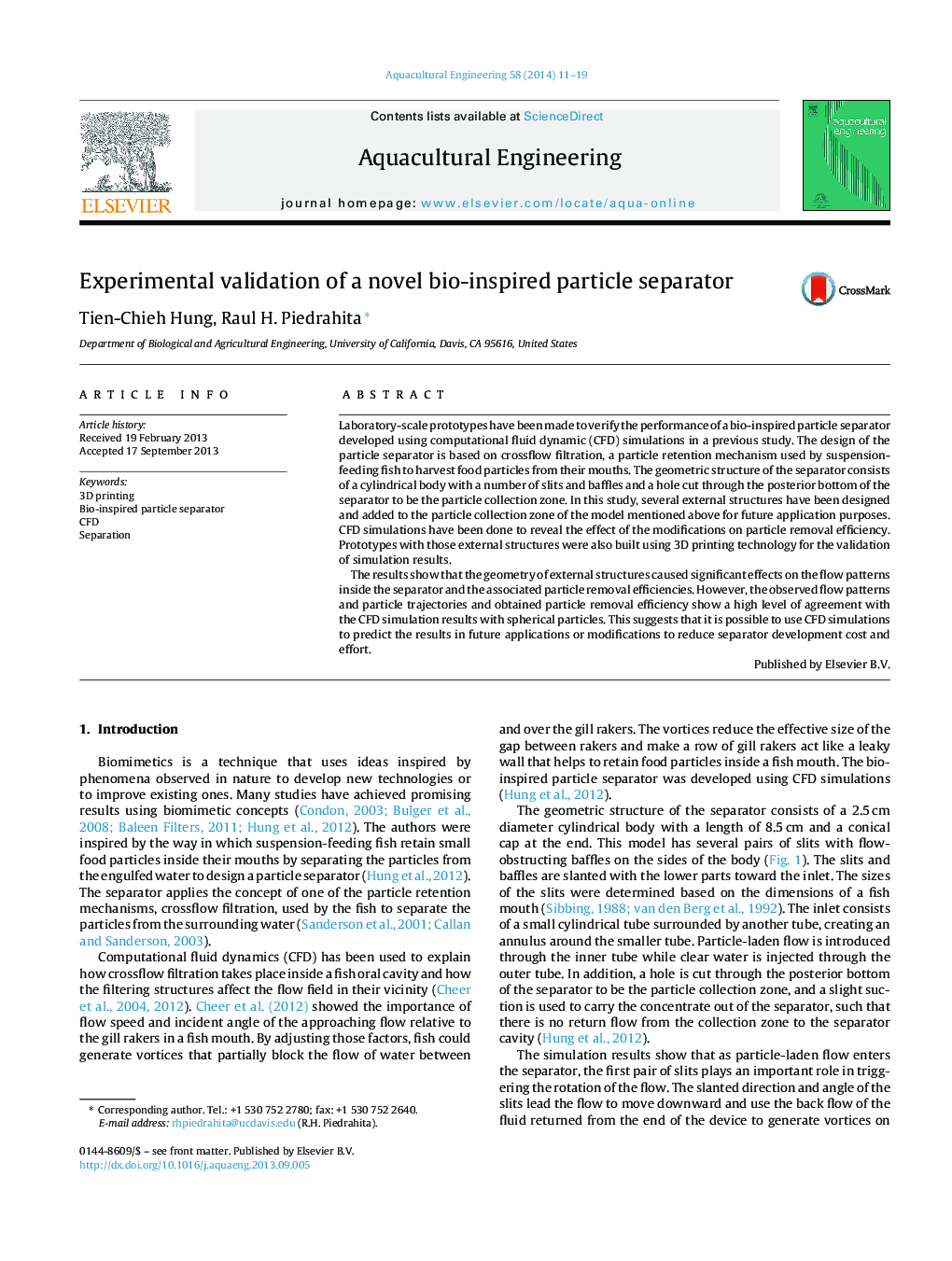| Article ID | Journal | Published Year | Pages | File Type |
|---|---|---|---|---|
| 4527201 | Aquacultural Engineering | 2014 | 9 Pages |
•The separator design is based on the food retention mechanism used by fish.•3D-printed prototypes were used to verify CFD simulation results.•Physical model trials verified the simulation results for spherical particles.•Shape factor is critical for predicting the removal of non-spherical particles.•Flow patterns and particle trajectories also verified the simulation results.
Laboratory-scale prototypes have been made to verify the performance of a bio-inspired particle separator developed using computational fluid dynamic (CFD) simulations in a previous study. The design of the particle separator is based on crossflow filtration, a particle retention mechanism used by suspension-feeding fish to harvest food particles from their mouths. The geometric structure of the separator consists of a cylindrical body with a number of slits and baffles and a hole cut through the posterior bottom of the separator to be the particle collection zone. In this study, several external structures have been designed and added to the particle collection zone of the model mentioned above for future application purposes. CFD simulations have been done to reveal the effect of the modifications on particle removal efficiency. Prototypes with those external structures were also built using 3D printing technology for the validation of simulation results.The results show that the geometry of external structures caused significant effects on the flow patterns inside the separator and the associated particle removal efficiencies. However, the observed flow patterns and particle trajectories and obtained particle removal efficiency show a high level of agreement with the CFD simulation results with spherical particles. This suggests that it is possible to use CFD simulations to predict the results in future applications or modifications to reduce separator development cost and effort.
